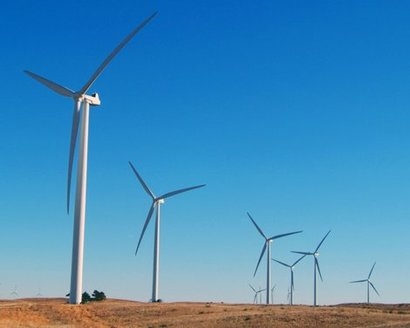
This growth was fuelled by strong consumer demand, unprecedented injection of new capital into companies, technologies, and projects, and a wave of supportive new policies.
“As the world grapples with the impacts of climate change and disruption of energy markets, the momentum gained by the clean energy transition in 2021 is a beacon of hope, pointing the way forward” said Lisa Jacobson, BCSE President. “I am confident that the upward trends we saw in 2021 will continue and that long-term investment in the clean energy portfolio of energy efficiency, natural gas, and renewable energy will yield powerful dividends in terms of energy security, economic benefit to our country and emission reductions.”
Consisting of 50 slides with data visualisations, the Factbook is a succinct resource that highlights the status of sustainable energy in the US as the country pursues its climate goals. In addition to highlighting the contributions of key energy sectors to 2021’s performance, the Factbook weaves together important market and investment dynamics, technology trends and policy developments. The conclusions drawn from the data not only point to the current momentum of the clean energy transition, but also underscore the need for additional public policy support that accelerates the speed and scale of the deployment of clean energy and energy efficiency solutions.
“Last year really was a year of firsts” added Ethan Zindler, BloombergNEF’s head of Americas. “We saw record volumes of new capital deployed to support the transition to a lower-carbon economy, a record number of electric vehicles sold, and record contributions to the power grid from zero-carbon renewable sources of power. Still, there are plenty of open questions about future demand that clearer signals from Washington could resolve.”
As revealed in the Factbook, the story of the US energy transition in 2021 is rooted in previously unseen levels of investment. Global private investment soared to $755 billion in 2021. The US set a record at $105 billion. Meanwhile, the federal government made an unprecedented $80 billion pledge to support energy transition with the enactment of the Infrastructure Investment and Jobs Act, which looks to leverage significant private sector investment.
Another key driver was large energy consumers, namely large corporations, demanding more clean energy. In 2021, companies signed contracts to procure a record 17 gigawatts of renewable capacity. In addition, a total of 351 companies have now pledged to procure 100 percent clean energy, with 65 new companies joining RE100 in 2021. These market signals set the stage for continued increases in clean energy in 2022 and beyond.
US energy productivity, energy supply and energy demand all rose in 2021 compared to 2020, the year Covid-19 first buffeted the economy. Energy productivity – the ratio of energy consumed in the US compared to the economy’s overall gross domestic product – improved 1.3 percent and the share of US electricity demand met by natural gas and renewable energy increased to 59 percent.
The rise of clean energy generation and the adoption of energy efficiency measures helped US household energy costs remain historically low in 2021, even when confronted with higher prices for many goods and energy-related products, namely gasoline, due to supply chain disruptions and inflation. In fact, Americans felt the energy price squeeze much less acutely than others elsewhere in the world. These impacts make the case for continued investment in energy efficiency technologies.
One area that did not see improvement in 2021 was US greenhouse gas emissions. As Covid-19 restrictions lifted in 2021, total CO2 emissions jumped 5.8 percent year-on-year. However, this came immediately on the heels of a sharp drop in 2020 as the pandemic first took hold. Thanks to investments already made in low and zero-carbon technologies, total US emissions finished 2021 4.4 percent below 2019 levels and 15 percent below 2005 levels.
In the power sector, emissions rose year-on-year as coal-fired generation rebounded, offsetting natural gas generation. This change should be short-lived due to the record levels of renewable build and other clean energy investments seen in 2021. But the rise in emissions signals the need to enact policies that will help reduce emissions and protect communities from the worst impacts of climate change, including the increasing severity and cost of extreme weather events as experienced in 2021.
Historic public and private sector investment, increased consumer demand and the enactment of supportive new policies drove growth in the energy transition, despite the challenges and uncertainties of Covid-19 business conditions. As a result, clean energy played a key role in the US economy in 2021 and set the stage for even more growth in 2022.
For additional information:

